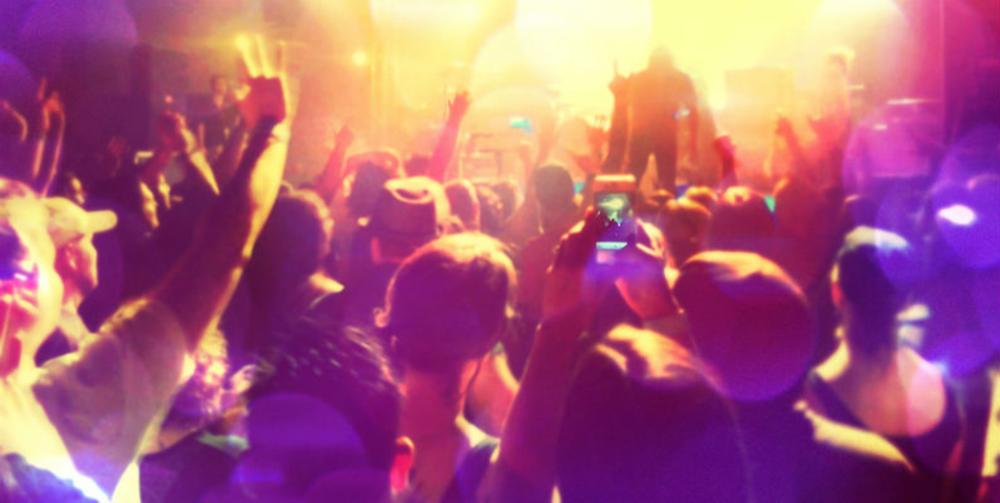Five thousand members of your target audience are standing in a room just waiting around. Every person there is packing some kind of mobile device and they know how to use it. In other words, these people are ready to rock—but there’s not much more for them to do other than mill about, glance at the stage, glance at the time on their phone, buy a beer, and probably take an ill-advised selfie while they watch the roadies do their thing.
Live events—concerts especially, but this applies to trade shows, conventions, and online events, too—are the ideal place to take a humdrum sponsorship opportunity and turn it up to 11, Spinal Tap-style.
Most forms of entertainment in which an audience gapes up at a stage while performers perform are passive; essentially “one-way experiences,” says Aaron Price, cofounder and CEO of livecube, which uses interactive game-based mechanics to motivate social sharing and engagement at events. But it certainly doesn’t have to be that way, especially in the age of the always-connected consumer.
“When you have people’s attention in one location over a specified period of time, you also have the opportunity to communicate with them and prompt them to engage with you in some way,” says Price. “It’s a way to drive meaningful conversations and even networking opportunities.”
But before you go off and start gamifying everything that moves in the name of enhanced engagement, Price advises asking yourself (and honestly answering) a simple question: What are you trying to achieve? Because if your gamification strategy doesn’t align with your business goals and you’re not providing the proper rewards and incentives, not only won’t your audience care, but you’ll be wasting your time and resources.
“It’s about coming up with the right game mechanics for your particular needs, whether you’re a publication, a Fortune 500 company, or a brand sponsoring an event, so that you’re driving the desired behaviors,” Price says. “You can’t just gamify something and think it’s going to be automatically awesome.”
A shift in mind-set might help. Instead of sponsoring an event, brands should think of it as sponsoring an experience, like what Heineken did as the official malt beverage sponsor of the Coachella music and arts festival in California. The beer brand partnered with SnapChat to tease users with ephemeral, tightly cropped photo clues about special, unannounced acts throughout the festival.
Sponsors often have access to cool rewards that fans really want—and we’re not talking about $100 gift cards.
“Sometimes the best rewards are things like status or access to power rather than just stuff,” Price says. “Money or an object is far less motivating than the chance to get up on stage or to meet your favorite artist.”
Take Inc. magazine, for example, which used livecube to up participation levels at its GrowCo conference, an educational event aimed at budding entrepreneurs and business leaders. Inc., which knew from having collected feedback that people were interested in more and higher-quality networking experiences, took action on that insight. After engaging in a series of tasks designed to encourage networking among conference attendees, players could win the chance to watch mega-businessman Mark Cuban’s keynote address at a special VIP table with Inc. columnist and senior contributing editor Norm Brodsky.
The reward was perfect in this case because a) it was something GrowCo attendees really wanted to win, and b) it didn’t cost Inc. a penny.
“You don’t have to run a million-dollar challenge or do a big, huge expensive thing,” Price says. “When brands reward people for what they actually want to do anyway, then game mechanics can massively accelerate and amplify an experience—and it’s a lot more engaging and fun than static, one-way marketing.”








